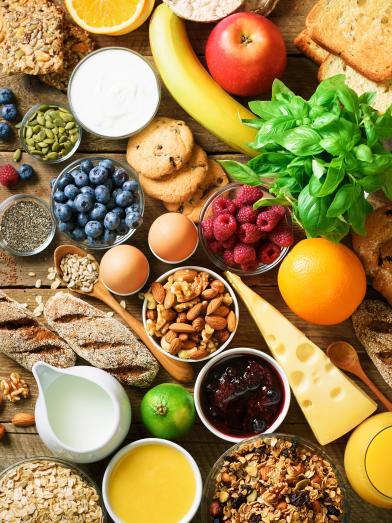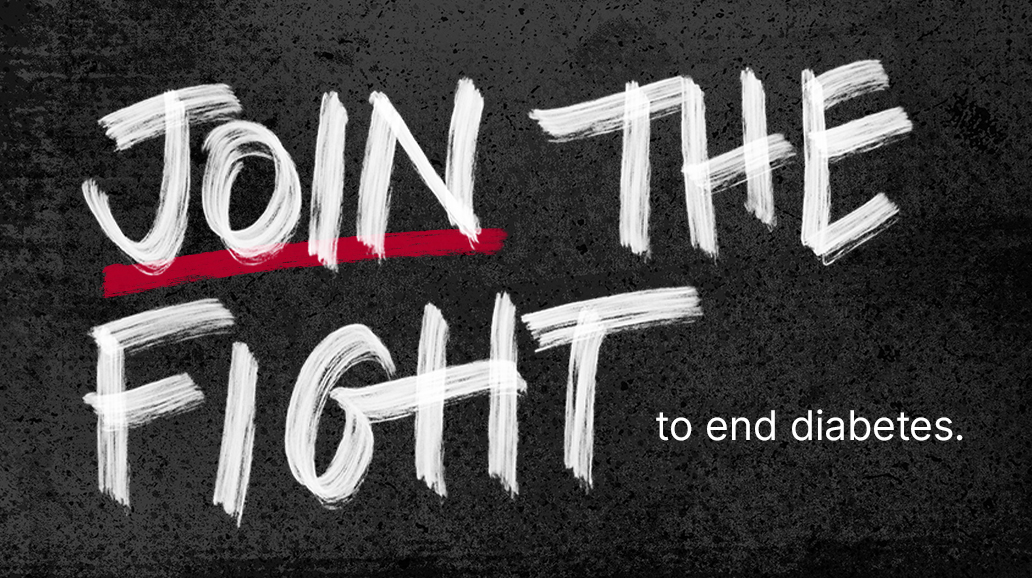Hoy en día, los carbohidratos reciben mucha atención y no es ningún secreto que pueden afectar el nivel de glucosa en sangre (azúcar en sangre). Es posible que te preguntes si deberías comer menos o incluso no comerlos. ¡No estás solo!
Los carbohidratos se presentan en muchas formas diferentes, pero las tres principales son el almidón, la fibra y el azúcar. Al comprar alimentos envasados, el término “carbohidratos totales” se refiere a estos tres tipos. Obtenga más información sobre las etiquetas nutricionales. Entonces, ¿cuál es la cantidad adecuada?
Empecemos por lo básico. Todos los alimentos están compuestos por tres nutrientes principales: carbohidratos, proteínas y grasas. Necesitamos los tres para mantenernos sanos, pero cada persona necesita una cantidad diferente. Al elegir los carbohidratos, la clave es elegir los carbohidratos complejos, los que nos aportan más por nuestra inversión en términos de vitaminas, minerales y fibra. Los carbohidratos complejos se digieren más lentamente, por lo que es menos probable que provoquen un aumento rápido de la glucosa en sangre como los carbohidratos refinados. Algunos ejemplos son los cereales integrales y las legumbres.
Los alimentos procesados tienden a tener un alto contenido de carbohidratos, especialmente carbohidratos refinados, y también un bajo contenido de vitaminas, minerales y fibra, lo que les da una mala reputación. Pero elegir menos alimentos con carbohidratos procesados y prestar atención a la cantidad que come puede marcar una gran diferencia en su nivel de glucosa en sangre y su salud en general.
Ahora, profundicemos en los tipos de alimentos que tienen carbohidratos y cómo elegir fuentes de mayor calidad.
Almidón
Intente consumir alimentos integrales con carbohidratos mínimamente procesados. Si utiliza el método del plato, los alimentos de esta categoría deben representar aproximadamente una cuarta parte de su plato. Los alimentos con alto contenido de almidón incluyen:
- Verduras ricas en almidón como el maíz, la calabaza de invierno y las patatas.
- Legumbres y legumbres, incluidas lentejas, frijoles (como frijoles rojos, frijoles pintos y frijoles negros) y guisantes (piense en guisantes partidos y guisantes de ojo negro)
- Granos que incluyen alimentos elaborados con trigo como fideos y pastas, pan y galletas, así como arroz y otros.
Los cereales integrales son precisamente eso: la planta entera que ha sido cosechada y secada con poco procesamiento. Aportan fibra, así como vitaminas esenciales como la B y la E y otros minerales necesarios para una salud óptima. Algunos ejemplos son la avena, la cebada, el bulgur, la quinoa, el arroz integral, el farro y el amaranto. Al menos la mitad de la ingesta diaria de cereales debe provenir de cereales integrales.
¿Te preguntas qué pasa con los “granos refinados”? Básicamente, estos granos se procesan para eliminar las capas externas y las partes más nutritivas del grano, lo que significa que nos perdemos toda la fibra, las vitaminas y los minerales beneficiosos que normalmente proporcionaría el grano integral. Para evitar enfermedades causadas por deficiencias de vitaminas y minerales, existen leyes que garantizan que las vitaminas y los minerales esenciales se vuelvan a agregar durante el procesamiento; esto es lo que significa “enriquecido” cuando lo ves en la etiqueta.
En resumen: al leer la lista de ingredientes, busque productos que incluyan “grano integral” o “trigo integral” como primer ingrediente en lugar de “enriquecido”.
Fibra
La fibra proviene de alimentos de origen vegetal, como frutas, verduras y cereales integrales. La fibra actúa como un cepillo de limpieza natural del cuerpo: pasa por el tracto digestivo y se lleva consigo muchas sustancias nocivas. También nos ayuda a sentirnos saciados y a reducir el colesterol. Esos no son los únicos beneficios: comer alimentos con un alto contenido de fibra también puede mejorar la digestión, ayudar a controlar la glucemia y reducir el riesgo de sufrir enfermedades cardíacas.
Se recomienda que las personas con diabetes y aquellas en riesgo de padecerla consuman al menos la misma cantidad de fibra dietética recomendada para todos los estadounidenses. Las Guías Alimentarias para los Estadounidenses (DGA, por sus siglas en inglés) recomiendan un mínimo de 14 gramos de fibra por cada 1000 calorías. Puede encontrar recomendaciones específicas para su grupo de edad y género en las Guías Alimentarias para los Estadounidenses .
Tenga en cuenta que si no ha estado comiendo muchos alimentos ricos en fibra a diario, es importante aumentar su consumo lentamente para permitir que su cuerpo se adapte. Un aumento repentino en el consumo de alimentos ricos en fibra (especialmente alimentos con fibra agregada o cuando se usan suplementos) puede causar gases, hinchazón o estreñimiento. Asegúrese de beber suficiente agua también, ¡porque la fibra necesita agua para moverse por su cuerpo!
Las buenas fuentes de fibra dietética incluyen:
- Legumbres (como lentejas y guisantes) y frijoles y legumbres (por ejemplo, frijoles blancos, frijoles blancos pequeños, guisantes partidos, garbanzos, lentejas y frijoles pintos).
- Frutas y verduras, especialmente aquellas con piel comestible (como peras y manzanas) y aquellas con semillas comestibles (como bayas)
- Frutos secos: prueba distintos tipos (las semillas de calabaza, las almendras, las semillas de girasol, los pistachos y los cacahuetes son una buena fuente de fibra y grasas saludables, pero ten cuidado con el tamaño de las porciones, porque también contienen muchas calorías en una pequeña cantidad).
- Granos integrales como:
- Quinoa, cebada, bulgur, avena, arroz integral y farro.
- Pasta de trigo integral
- Cereales integrales, incluidos los elaborados con trigo integral, salvado de trigo y avena.
Los alimentos que son naturalmente ricos en fibra y contienen al menos 2,5 gramos a menudo se etiquetan como una “buena fuente”, y los alimentos etiquetados como “excelente fuente” contienen más de 5 gramos de fibra por porción.
Si bien es mejor obtener la fibra de los alimentos, hable con su equipo de atención de la diabetes para determinar si debe considerar un suplemento de fibra.
Azúcar
El azúcar es otra fuente de carbohidratos. Existen dos tipos principales:
- Azúcares naturales como los que se encuentran en la leche o la fruta.
- Azúcares añadidos, que se añaden durante el procesamiento, como en los refrescos comunes, los dulces y los productos horneados.
Los azúcares añadidos, cuando se consumen con grasas sólidas y un exceso de ingesta de energía, se han relacionado con problemas de salud, como el sobrepeso y la obesidad, la diabetes tipo 2 o prediabetes, la inflamación y las enfermedades cardiovasculares. Es posible que haya oído hablar de los azúcares añadidos con otros nombres, o haya visto alguno de ellos en la lista de ingredientes de una etiqueta de alimentos. Dextrosa, fructosa, lactosa, azúcar de mesa, azúcar de remolacha, miel, jarabe de maíz, turbinado y agave son solo algunos de los muchos nombres que se les dan a los azúcares añadidos.
Encontrar la cantidad de azúcar
¿Sabías que puedes encontrar la cantidad de azúcares añadidos y naturales que figuran en la nueva etiqueta de información nutricional? Aprende a descifrar la etiqueta.
Alcoholes de azúcar
Otro elemento que puede encontrar en la etiqueta de información nutricional de algunos alimentos bajo los carbohidratos totales son los alcoholes de azúcar. Los alcoholes de azúcar son edulcorantes que tienen aproximadamente la mitad de calorías que el azúcar común. A pesar de su nombre, no son ni azúcar ni alcohol. Se encuentran de forma natural en ciertas frutas y verduras, pero algunos son artificiales y se agregan a los alimentos procesados. Muchos alimentos etiquetados como "sin azúcar" o "sin azúcar agregado" contienen alcoholes de azúcar.
Sustitutos del azúcar
Actualmente, existen muchos productos en el mercado a los que se hace referencia como sustitutos del azúcar. La mayoría de ellos son edulcorantes no nutritivos, lo que significa que una porción del producto contiene pocas o ninguna caloría o impacto en la glucosa en sangre. Debido a que estos edulcorantes son más dulces que el azúcar, se pueden utilizar en cantidades más pequeñas. La Administración de Alimentos y Medicamentos de los Estados Unidos (FDA) ha revisado varios sustitutos del azúcar y los ha aprobado o reconocido como seguros para el público, incluidas las personas con diabetes. Estos son:
- Sacarina (dulce y bajo)
- Neotame (Nuevotame)
- AcesulfamoK (Sunett, Sweet One)
- Aspartamo (NutraSweet, Equal, Sugar Twin)
- Sucralosa (Splenda)
- Ventajas
- Estevia
- Luo han guo (fruta del monje)
La mayoría de estos productos no son descompuestos por el cuerpo, lo que significa que pasan a través de nuestro sistema sin aportar calorías. Para algunas personas, el consumo de estos productos es una gran alternativa al azúcar. La posible disminución de calorías y carbohidratos podría conducir a una mejor glucemia, un mejor peso y/o una mejor salud cardiometabólica (piense en: corazón y metabolismo) a largo plazo.
Una advertencia : las afirmaciones como "sin azúcar", "con azúcar reducida" o "sin azúcar añadido" no necesariamente significan que el producto no contiene carbohidratos o que tiene menos carbohidratos que la versión original del producto. Le recomendamos que lea la etiqueta de información nutricional para saber cuántos carbohidratos y calorías está consumiendo.
También es importante saber que, en este momento, no hay evidencia clara que sugiera que el uso de sustitutos del azúcar ayudará a controlar la glucosa en sangre o el peso o a mejorar la salud cardiometabólica a largo plazo. Así que, esta es la conclusión:
- Los sustitutos del azúcar son alternativas eficaces al azúcar para algunas personas, pero no son ideales para todos: es una elección personal.
- Si desea reducir su consumo de azúcar o sustitutos del azúcar, comience de a poco. Por ejemplo, comience reemplazando un refresco o jugo por agua o una bebida sin calorías a la vez.
- ¡El agua siempre será una gran opción! Si te empiezas a aburrir de beber solo agua, siempre puedes darle un toque especial con frutas o hierbas, como esta agua con gas con infusión de fresa y menta.
¿Qué son los “carbohidratos netos”?
Si bien es posible que lo vea en algunos envases de alimentos, el término “carbohidratos netos” no tiene una definición legal y no lo utiliza la Administración de Alimentos y Medicamentos ni lo reconoce la Asociación Estadounidense de Diabetes. La FDA recomienda utilizar los carbohidratos totales en la etiqueta de información nutricional.
Los “carbohidratos netos” se determinan restando cualquier fibra o alcoholes de azúcar que figure en la etiqueta de los carbohidratos totales. Esto supone que la fibra y los alcoholes de azúcar no se absorben ni metabolizan, pero esto no siempre es así y algunos se digieren parcialmente y, por lo tanto, siguen aportando calorías y afectando la glucosa en sangre. La ecuación utilizada para calcular los carbohidratos netos no es del todo precisa porque la contribución de la fibra y los alcoholes de azúcar a los carbohidratos totales depende de los tipos presentes. El tipo de fibra o alcoholes de azúcar utilizados no se indica en la etiqueta de información nutricional, por lo que no se puede determinar con precisión el efecto sobre la glucosa en sangre y los posibles ajustes de la terapia con insulina.
Por este motivo, recomendamos utilizar los gramos totales de carbohidratos y controlar de cerca su nivel de glucosa en sangre cuando consuma alimentos con alto contenido de fibra o alcohol de azúcar para determinar cómo afectan su cuerpo. Obtenga más información sobre los "carbohidratos netos" y otras afirmaciones sobre nutrientes que puede encontrar en la etiqueta de información nutricional.






